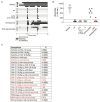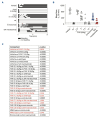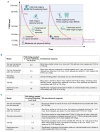Consistent clinical factor VIII equivalency is unlikely for non-factor therapies in hemophilic mice
- PMID: 40176760
- PMCID: PMC12399968
- DOI: 10.3324/haematol.2024.286982
Consistent clinical factor VIII equivalency is unlikely for non-factor therapies in hemophilic mice
Erratum in
-
Erratum to: "Consistent clinical factor VIII equivalency is unlikely for non-factor therapies in hemophilic mice".Haematologica. 2025 Dec 1;110(12):3182-3183. doi: 10.3324/haematol.2025.289135. Haematologica. 2025. PMID: 41321265 Free PMC article. No abstract available.
Abstract
Non-factor therapies are changing the treatment paradigm in hemophilia A, which was previously dominated by replacement- therapy using factor VIII (FVIII) concentrates. However, the FVIII equivalence of these new therapies has remained unclear, since in vitro assays generate variable responses. Here we used four different in vivo bleeding models to compare FVIII to emicizumab and to a sequence-identical analog of the tissue factor pathway inhibitor-targeting antibody marstacimab (SIA-marstacimab). The severity of these models was variable, each requiring different doses of FVIII to reduce blood loss to levels of wild-type mice. For example, a dose of 2.5 IU/kg FVIII was needed for full correction in the tail vein transection (TVT) model, whereas 25 IU/kg was needed in the saphenous vein puncture (SVP) model. Intermediate doses were required in the tail artery transection (TAT) model (5 IU/kg) and tail clip model (7.5 IU/kg). Importantly, FVIII treatment produced stable clots, without spontaneous rebleeds being observed. Both emicizumab and SIA-marstacimab (used at therapeutic doses of 55 μg/mL and 16 μg/mL, respectively) displayed a variable, model-dependent FVIII equivalence. For example, emicizumab proved equivalent to 5 IU/kg FVIII in the tail clip model, and to 10 IU/kg in the SVP model. Strikingly, both emicizumab and SIA-marstacimab treatment resulted in spontaneous rebleeds in the TVT, TAT and tail clip models, further distinguishing them from FVIII treatment. Our data suggest that there is unlikely to be a single FVIII equivalence for emicizumab, SIA-marstacimab, and similar molecules, because their activity is dependent on local conditions and severity of the injury.
Figures







References
-
- Weyand AC, Pipe SW. New therapies for hemophilia. Blood. 2019;133(5):389-398. - PubMed
-
- Kitazawa T, Igawa T, Sampei Z, et al. A bispecific antibody to factors IXa and X restores factor VIII hemostatic activity in a hemophilia A model. Nat Med. 2012;18(10):1570-1574. - PubMed
-
- Oldenburg J, Mahlangu JN, Kim B, et al. Emicizumab prophylaxis in hemophilia A with inhibitors. N Engl J Med. 2017;377(9):809-818. - PubMed
-
- Mahlangu J, Oldenburg J, Paz-Priel I, et al. Emicizumab prophylaxis in patients who have hemophilia A without Inhibitors. N Engl J Med. 2018;379(9):811-822. - PubMed
MeSH terms
Substances
LinkOut - more resources
Full Text Sources
Medical

